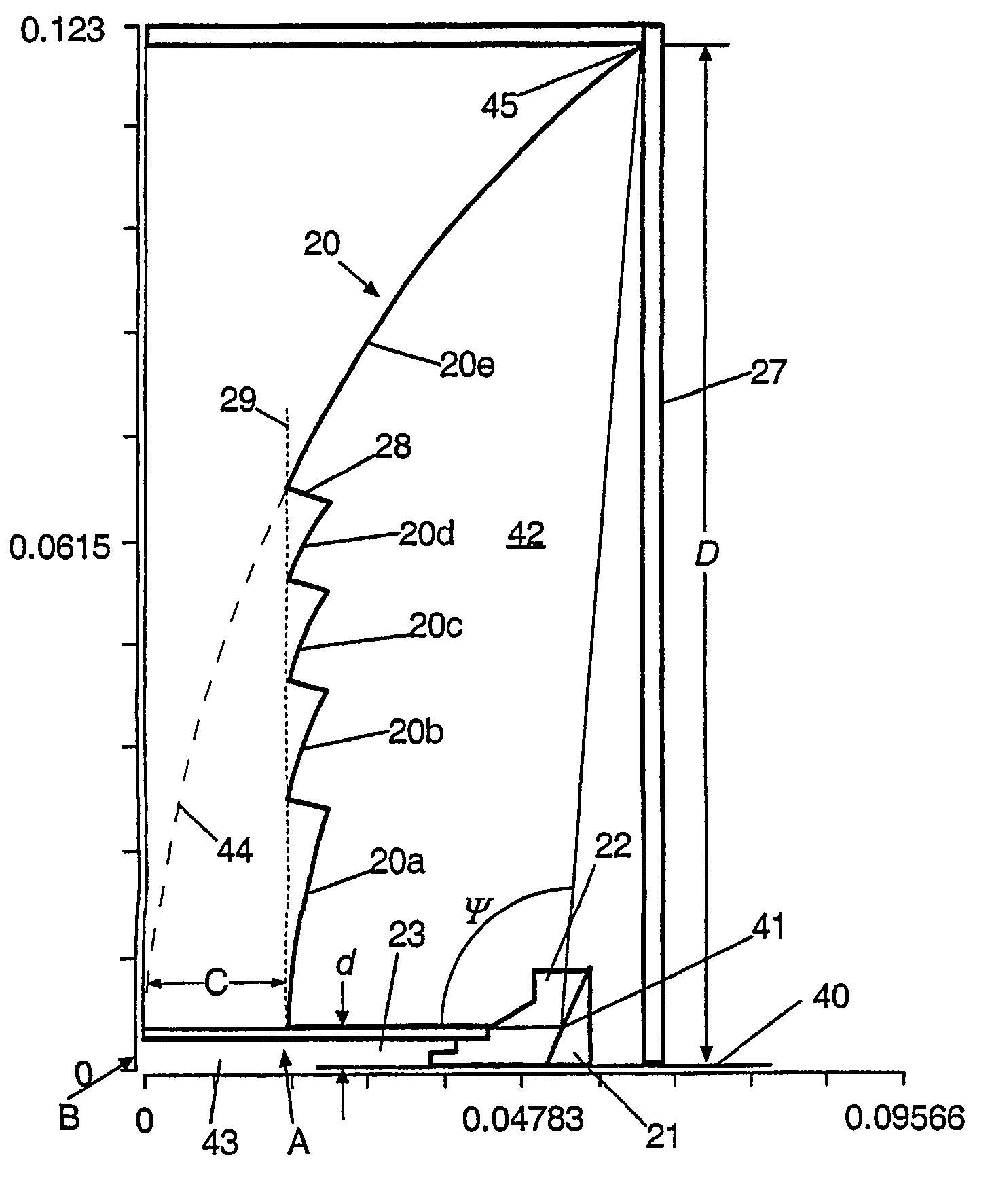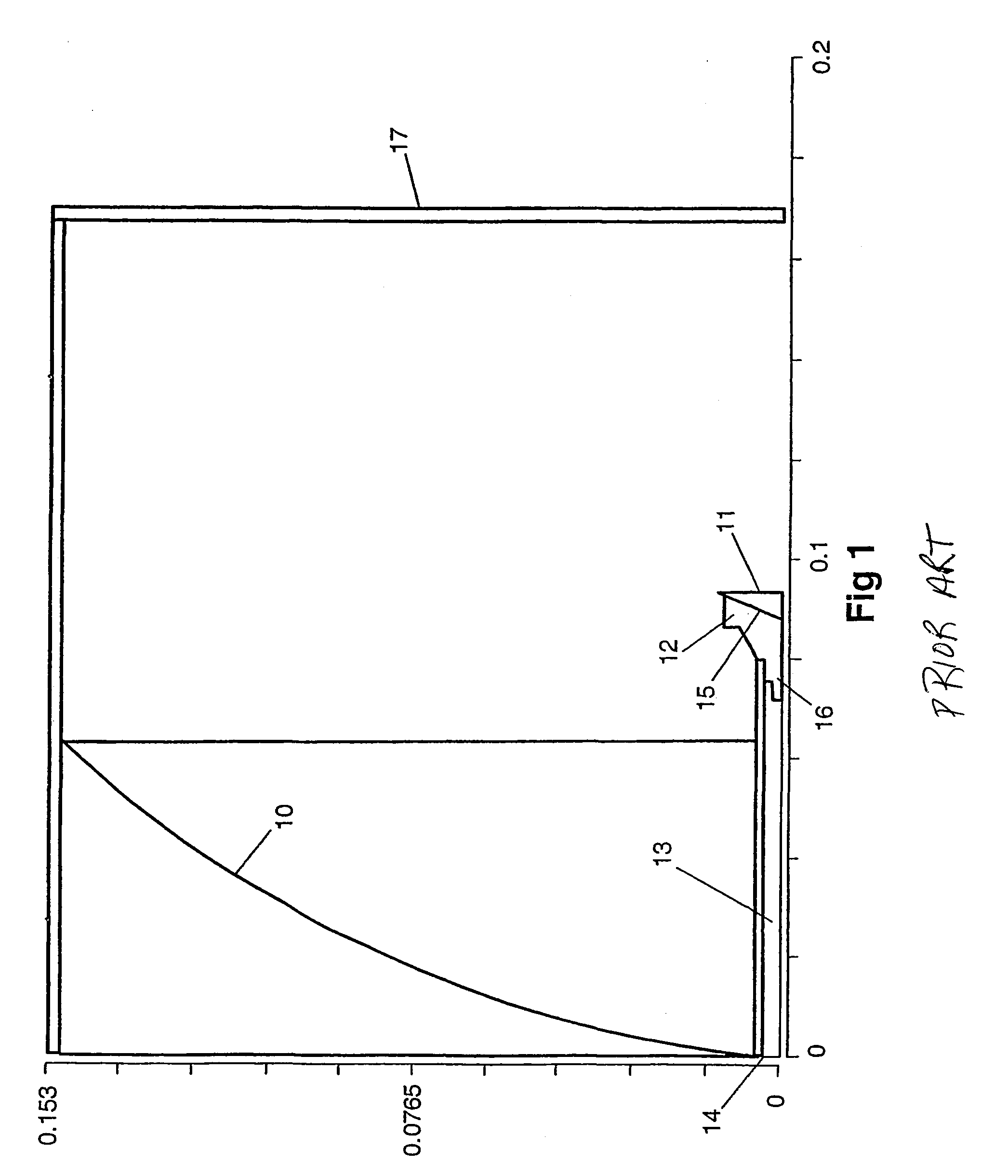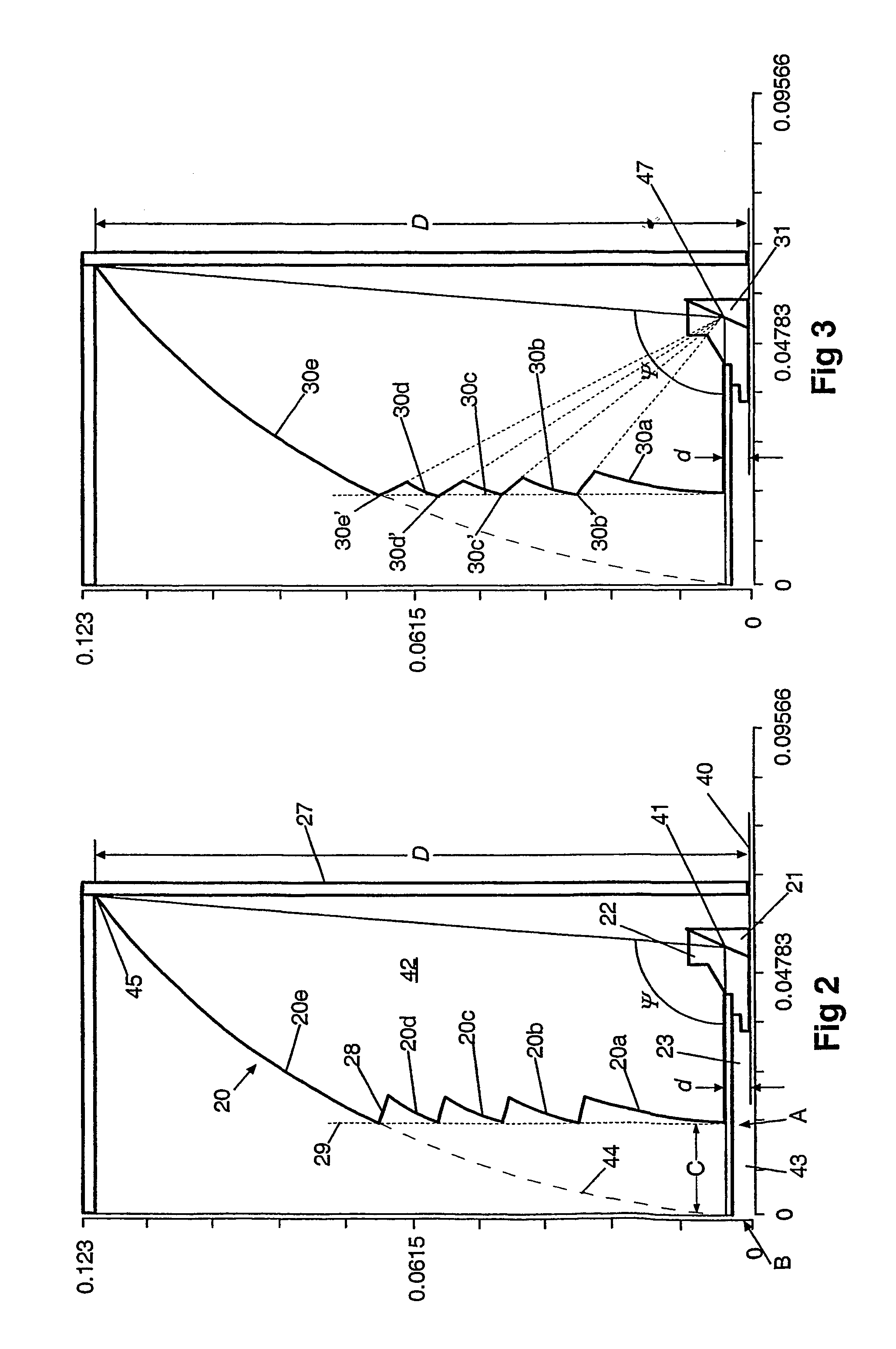Parabolic reflector and antenna incorporating same
a technology of reflector and antenna, applied in the direction of antennas, radiating element housings, electrical devices, etc., can solve the problems of low losses, increase in conductor losses in the associated feed network, and gain limit of about 30 db, so as to achieve the effect of reducing the depth of the reflector
- Summary
- Abstract
- Description
- Claims
- Application Information
AI Technical Summary
Benefits of technology
Problems solved by technology
Method used
Image
Examples
Embodiment Construction
[0018]Referring now to FIG. 2, an embodiment of an antenna according to the present invention is shown, comprising as before a main reflector 20, a subreflector 21, a dielectric cone 22, a waveguide section 23 and a radome 27. This time, however, the reflector 20 is a multi-stage antenna, consisting of a plurality N of concentric annular sections 20a-20e (N=5 in this example) which are connected to each other via concentric annular strips 28. Each of the sections 20a-20e has a reflecting surface that is parabolic in a radial direction. The strips 28 connect the outer perimeters of the various sections (except the last section 20e) to the inner perimeters of the succeeding sections, there being formed thereby a continuous inner reflecting surface of the main reflector 20. The inner perimeter of the first section 20a forms part of the apex of the reflector 20, while the outer perimeter of the last section 20e forms the outer perimeter of the entire reflector 20.
[0019]In the illustrate...
PUM
 Login to View More
Login to View More Abstract
Description
Claims
Application Information
 Login to View More
Login to View More - R&D
- Intellectual Property
- Life Sciences
- Materials
- Tech Scout
- Unparalleled Data Quality
- Higher Quality Content
- 60% Fewer Hallucinations
Browse by: Latest US Patents, China's latest patents, Technical Efficacy Thesaurus, Application Domain, Technology Topic, Popular Technical Reports.
© 2025 PatSnap. All rights reserved.Legal|Privacy policy|Modern Slavery Act Transparency Statement|Sitemap|About US| Contact US: help@patsnap.com



